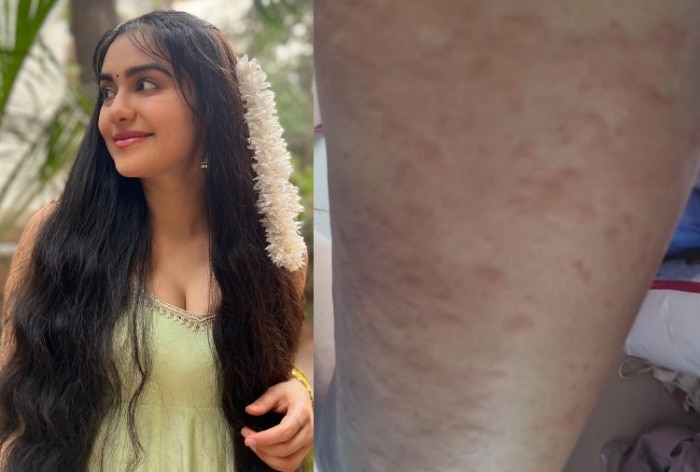Home Health – Understanding Hives: Signs, Causes, and Treatment
Hives, also known as urticaria, are a type of allergic skin reaction caused by various external factors. While acute urticaria is easier to manage than chronic urticaria, pinpointing the exact reason for hives can be challenging in some cases.
Adah Sharma, popular actress from India, recently shared her experience of being hospitalized due to a severe rash caused by hives. She revealed that her condition worsened because of a side effect from her medication. Adah Sharma documented her adverse reaction to the medication through several photos posted on social media.
So, what exactly are hives and how can they be treated? According to Dr. Kashish Kalra, a dermatologist from Max Smart Hospital in New Delhi, hives, or urticaria, are a common skin condition characterized by raised, itchy welts on the skin’s surface. These welts can vary in size and color, appearing as red or pale marks. Hives are typically triggered by allergic responses to external antigens, which can include various factors such as food, infections, dust, and mites.
Hives present with itchy wheals accompanied by skin redness and swelling. They can appear anywhere on the body and can last for a few hours to several days. Medical professionals classify hives into two main types based on their duration and manifestation:
1. Acute Urticaria: Lasting less than six weeks, this type of hives is a transient reaction to an allergen, causing discomfort and anxiety in affected individuals.
2. Chronic Urticaria: Extending beyond six weeks, chronic urticaria is more challenging to manage. Approximately 50% of cases have no identifiable cause, known as chronic spontaneous idiopathic urticaria. The other 50% may have identifiable triggers that require thorough investigation. Chronic urticaria can also manifest in specific types based on their triggers, such as cold urticaria, aquagenic urticaria, and pressure or vibratory urticaria.
The causes of hives can be complex, making it difficult to identify the exact trigger in some cases. Common allergens and triggers include certain foods, infections, medications, environmental factors, vaccines, medications, and pressure or vibrations.
Treatment and prevention strategies for hives involve a comprehensive evaluation of the underlying cause, followed by targeted treatments. It is crucial to seek professional guidance from a dermatologist or healthcare practitioner to ensure appropriate management. Treatment approaches may include prescribed antihistamines to reduce itching, avoiding triggers, applying topical treatments for relief, and, in severe cases, corticosteroid injections to alleviate inflammation. Rare but critical complications may require immediate medical attention.
In conclusion, understanding the signs, causes, and treatment options for hives is essential in effectively managing this common but often misunderstood skin condition. Seeking medical advice, identifying triggers, and following prescribed treatments are vital steps towards managing hives and preventing their recurrence.

